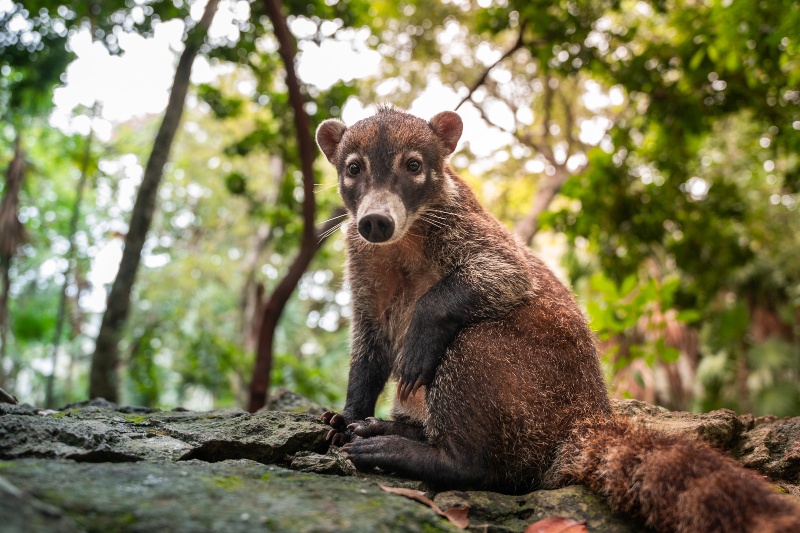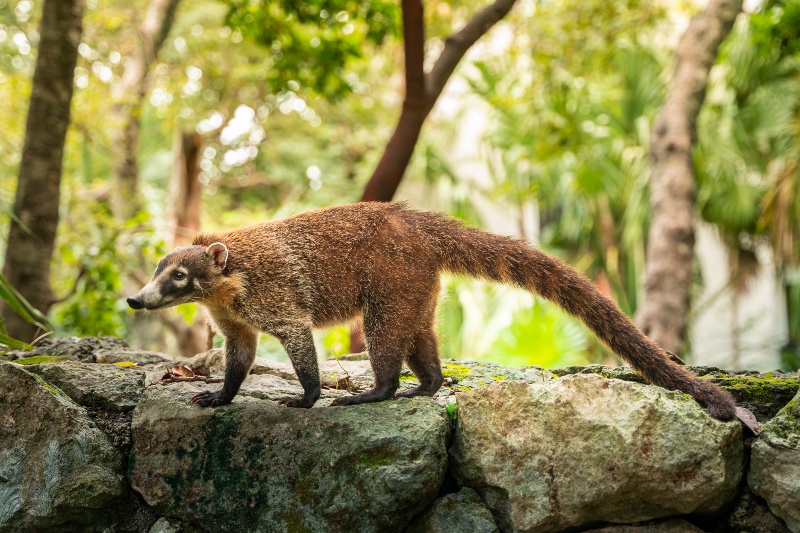
The Kudamundi or Mexican Raccoon Has 10 Different Names
Ever wondered what a Kudamundi Is?
If you’ve ever been to a Sandos resort in the Riviera Maya you know that we have plenty of wild animals roaming the properties. One of the critters you’ll see at Sandos Caracol Eco Experience Resort and Sandos Playacar is known as the “coati” or “kudamundi”.

The Kudamundi (also known as the Mexican raccoon) lives all across North and South America, in regions like Central America and Brazil, and they’re also an important part of wildlife in Mexico. Since it spans so many cultures, the coati has several names in each country, derived from languages like Portuguese, Guarani, Spanish and even Mayan:
Coati
Coatimundi
Pizot
Hog-nosed raccoon
Tejón
Moncún
Cusumbo
Cuchucho
Cholugo
Gato Solo
Wildlife in Mexico is truly diverse, and the coati is no exception. There are four types of coati living throughout the Americas in a wide variety of different habitats, including rainforest, jungle, mangrove, mountain and even desert. The white-nosed coati is what you’ll find at our Riviera Maya resorts, and it lives in Mexico and Central America. The Cozumel Island coati is a rarer species only found on the island of Cozumel, which can be seen just off the coast of our resorts in the Riviera Maya area. The ring-tailed coati lives in the jungles of South America, and the mountain coati resides in the Andes Mountains of South America.

Coatis are in the same family as raccoons, although they usually have a longer snout, a slimmer torso and a more reddish tone to their fur. Known for their intelligence and their curiosity, coatis are a fascinating part of wildlife in Mexico. This creature is easily identifiable by its long, thin tail with starkly defined rings; they’re often seen with their tail held up into the air, a tactic they use to easily keep groups of coatis together in tall vegetation. Coatis have strong limbs that they use to dig for food and to climb trees, and at our Riviera Maya resorts you can often see them in the branches of our jungle and mangrove areas.

The female and young coatis live together in noisy, loosely organized groups of 10 to 30 individuals known as a “band”. To communicate, they use a variety of chirping, grunting and snorting sounds that express emotions like happiness, victory after a fight, anger, irritation, or claims to food while foraging. Once the males reach two years old, they live on their own; they only join the group when it’s time for mating, which starts at the beginning of the region’s rainy season. When the female coati is pregnant, she separates from the group for about three months and lives in a high-up nest. Once the babies are about six weeks old, the mother and her young rejoin the group.
Like other wildlife in Mexico, coatis are omnivores that eat plants and animals. They forage for food in the ground or up in the trees, eating primarily spiders and fruit along with small animals like lizards, birds, snakes and rodents.

When staying at Sandos Caracol and Sandos Playacar resorts, remember that the coati are wild animals. Never touch or pet the coatis, and try to keep a bit of distance when watching them, especially if you have small children. Even though the coatis and other animals might come up to you for food, don’t feed them. They’re an important and necessary part of the local food chain. They have a very specific diet that doesn’t include “people food”, and they need to forage for their own meals in order to maintain good health and the balance of the local ecosystem.
Let’s protect the incredible wildlife in Mexico!
